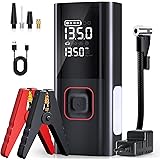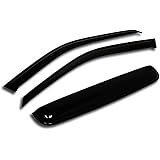Table of Contents
Do you know how important transmission fluid is for your car? It keeps your Dodge Journey’s transmission running smoothly. Using the right type and amount is key.
The type of transmission fluid and how much you use matters a lot. If you get it wrong, your transmission could wear out fast. This can cause overheating and lead to expensive fixes.
Key Takeaways
- Understanding the correct transmission fluid type for your Dodge Journey
- Determining the appropriate transmission fluid capacity
- The importance of regular transmission fluid checks
- Consequences of using incorrect transmission fluid
- Best practices for maintaining your vehicle’s transmission health
Understanding Dodge Journey Transmission Systems
Knowing how your Dodge Journey’s transmission works is key to keeping it running well. The transmission is a complex part that’s vital for your car’s performance.
Types of Transmissions Used in Dodge Journey Models
The Dodge Journey has different transmissions, based on the model year and engine. Here are a few:
- 4-Speed Automatic Transmission: Older models use this. It balances fuel efficiency and performance.
- 6-Speed Automatic Transmission: Newer models have this. It improves fuel economy and makes acceleration smoother.
- CVT (Continuously Variable Transmission): Some models have a CVT. It offers endless gear ratios for better engine performance and fuel use.
Each transmission type has its own needs and maintenance. This includes the right transmission fluid and how much you need.
How Transmission Fluid Functions in Your Vehicle
Transmission fluid is crucial for your Dodge Journey’s transmission. It does several important jobs:
- Lubrication: It keeps the transmission’s moving parts well-lubricated, reducing friction and wear.
- Cooling: It helps cool the transmission by taking heat away from important parts.
- Hydraulic Pressure: It creates the hydraulic pressure needed to shift gears.
- Cleaning: It also cleans the transmission by picking up dirt and debris.
Keeping the right amount and type of transmission fluid is vital. Regular checks and changes can prevent problems like slipping, hesitation, and early wear.
Dodge Journey Transmission Fluid Capacity Specifications
The amount of transmission fluid needed for a Dodge Journey depends on the transmission type. Knowing the right amount is key to keeping your car’s transmission running smoothly.
4-Speed Automatic Transmission Capacity
For Dodge Journeys with a 4-speed automatic, you’ll need about 4.3 quarts of fluid. Always check your owner’s manual or a repair manual for your exact model year’s needs.
6-Speed Automatic Transmission Capacity
Models with a 6-speed automatic need more fluid, usually around 6.1 quarts. But, the exact amount can change based on your model year and transmission setup.
CVT Transmission Capacity
CVT models have a different fluid need. They usually require 4-5 quarts. Make sure to check the manufacturer’s guidelines for the precise amount.
Here’s a quick guide to help you find the right fluid amount for your Dodge Journey:
| Transmission Type | Fluid Capacity (Quarts) |
|---|---|
| 4-Speed Automatic | 4.3 |
| 6-Speed Automatic | 6.1 |
| CVT | 4-5 |
Double-check the info in your owner’s manual or a reliable car source to make sure it’s right for your Dodge Journey.
Recommended Transmission Fluid Types for Dodge Journey
Choosing the right transmission fluid for your Dodge Journey is key to keeping it running well. The fluid you pick can really affect your car’s transmission. This, in turn, impacts how long it lasts and its overall health.
Factory Recommended ATF Specifications
The Dodge Journey needs Mopar ATF+4, as recommended by the factory. This is important because it makes sure the fluid works well with your car’s system. Mopar ATF+4 helps keep everything running smoothly by lubricating, cooling, and protecting against wear and corrosion.
Using the right ATF is crucial. It keeps your warranty valid and ensures your transmission works right.
Mopar vs. Aftermarket Fluid Options
You can choose between Mopar-branded fluids and aftermarket options for your Dodge Journey. Mopar fluids are made to fit your car perfectly. They’re tested to meet your vehicle’s needs.
Aftermarket fluids might be cheaper, but they might not work as well. Make sure any aftermarket fluid meets or beats the Mopar ATF+4 standard. This ensures it’s good for your Dodge Journey.
Synthetic vs. Conventional Fluid Considerations
Deciding between synthetic and conventional transmission fluids is another choice. Synthetic fluids perform better in extreme temperatures and last longer. But, they cost more.
Conventional fluids are okay for most driving but might not protect as well as synthetic fluids. This is true, more so, in harsh driving conditions.
The best fluid for your Dodge Journey depends on how you drive, your car’s needs, and what you prefer. Check your owner’s manual and talk to a mechanic to choose wisely.
Locating the Transmission Components in Your Dodge Journey
Knowing where the transmission parts are in your Dodge Journey is key to keeping it running well. The transmission is a vital part of your car. Knowing its parts helps with upkeep and spotting problems.
Transmission Dipstick Location by Model Year
The spot for the transmission dipstick changes with Dodge Journey model years. It might be near the air filter or closer to the engine. Check your owner’s manual or the dipstick itself for the exact spot.
The dipstick is connected to a long tube that goes to the transmission. It’s marked as “Transmission” or has a symbol. If you can’t find it, try online resources or diagrams for your model year.
Drain Plug and Fill Port Locations
The drain plug and fill port are important for fluid maintenance. The drain plug is at the bottom of the transmission pan. Its spot can differ based on the transmission type.
The fill port is on top or the side of the transmission. It’s marked with a label or symbol. For some models, you’ll need to remove a cap or plug to get to it.
Transmission Filter Access Points
The transmission filter needs regular maintenance. Its spot depends on your Dodge Journey’s transmission type. For some, it’s inside the transmission pan. For others, it’s a separate unit accessible from underneath or through the engine.
To find the transmission filter, check your owner’s manual or look for diagrams for your model and transmission type. Knowing where it is helps with routine replacements and keeping your transmission system in good shape.
Step-by-Step Guide to Checking Dodge Journey Transmission Fluid Level
To keep your Dodge Journey’s transmission in top shape, knowing how to check the fluid level is key. It’s a simple task that needs some basic steps and caution.
Preparation and Safety Precautions
First, park your vehicle on a flat surface. This is important for getting a correct reading. Engage the parking brake and shift the transmission to Park for safety.
- Ensure the engine is running when you check the fluid level.
- Wear gloves and eyewear to avoid injury from splashes.
- Check your owner’s manual for specific Dodge Journey model instructions.
Engine Temperature Requirements
The engine must be at normal operating temperature for an accurate reading. Drive for a few minutes to warm up the engine. This ensures the transmission fluid is at the right temperature for a precise reading.
The manufacturer says to check the fluid when it’s warm. This usually happens after a short drive.
Reading the Dipstick Correctly
Find the transmission dipstick, marked as “Transmission” or with a symbol. Pull out the dipstick and clean it with a cloth or paper towel. Put it back in and pull it out again. The dipstick will now show the fluid level.
Look at the markings on the dipstick. The level should be between “MIN” and “MAX”. If it’s below “MIN”, you need to add fluid.
Also, check the fluid’s color and texture. It should be pink or red and smooth. Dark or black fluid means it might be contaminated or old, needing more attention.
Signs of Transmission Fluid Problems in Your Dodge Journey
If you own a Dodge Journey, knowing the signs of transmission fluid issues is key. Transmission fluid is crucial for your car’s smooth running. Problems with it can cause minor issues or serious breakdowns.
Low Fluid Level Symptoms
Low transmission fluid can show in many ways in your Dodge Journey. A common sign is slipping or hesitation between gears. This happens when there’s not enough fluid for proper pressure, causing gear issues.
You might also hear unusual noises like grinding or whining when shifting gears. Low fluid can also cause delayed or harsh shifting. The transmission might struggle to shift smoothly, making driving jerky.
In some cases, you might feel a vibration or shudder when the transmission is under stress.
Contaminated or Burnt Fluid Indicators
Contaminated or burnt transmission fluid can also cause big problems. A clear sign is a change in the fluid’s color or consistency. Fresh fluid is bright red and smooth. If it looks dark or dirty, it needs to be changed.
A burnt smell is another sign of bad fluid. Overheated or contaminated fluid smells bad. This smell is more noticeable when the transmission is working hard or when checking the fluid.
Warning Lights and Electronic Alerts
Modern Dodge Journeys have advanced systems that watch the transmission. If there’s a problem, a warning light on your dashboard might come on. The “Check Engine” or “Transmission Temperature” light is often related to transmission issues.
Also, your car’s computer might show a message about transmission fluid or temperature. These alerts are meant to warn you of potential problems. If you see these warnings, check your transmission fluid level and condition right away.
Complete Dodge Journey Transmission Fluid Change Procedure
Learning how to change your Dodge Journey’s transmission fluid is key to avoiding expensive repairs. It also keeps your car running smoothly. The process includes draining the old fluid, replacing the filter, and adding new fluid.
Tools and Materials Required
Before you start, make sure you have the right tools and materials:
- Socket wrench or ratchet and socket set
- Drain pan
- New transmission fluid filter (if applicable)
- Transmission fluid (the correct type and amount for your Dodge Journey model)
- Funnel
- Rags
Step-by-Step Drain and Fill Process
Here’s how to drain and refill your Dodge Journey’s transmission fluid:
- Find the transmission pan and drain plug. Place the drain pan under it.
- Take out the drain plug and let the fluid drain fully.
- After draining, put the drain plug back and tighten it as needed.
- Take off the transmission fluid filter (if there is one) and put in a new one.
- Fill the transmission with the right type and amount of fluid.
Proper Refilling to Correct Capacity
To fill correctly, check your Dodge Journey’s owner’s manual or the manufacturer’s guide. Use the dipstick to check the fluid level. It should be at the recommended level.
| Model Year | Transmission Type | Fluid Capacity |
|---|---|---|
| 2011-2019 | 6-Speed Automatic | 4.8 quarts |
| 2020+ | CVT | Refer to manufacturer’s specs |
By following this guide, you can do a Dodge Journey transmission fluid change yourself. This keeps your transmission system in top shape.
Transmission Fluid Service Options for Dodge Journey
Knowing the transmission fluid service options for your Dodge Journey is key. Regular service keeps your vehicle’s transmission running well. This is important for its life and performance.
The Dodge Journey has several service options. These include partial drain and fill, complete flush, and filter replacement. Each option has its own benefits, depending on your driving habits and vehicle needs.
Partial Drain and Fill Benefits
A partial drain and fill is a common choice for Dodge Journey owners. It involves draining some fluid and adding new one. This method is:
- Cost-effective compared to a complete flush
- Less risk of introducing air into the transmission system
- Helps maintain the transmission’s performance by replenishing fresh fluid
Complete Flush Procedure
A complete flush replaces all the transmission fluid in your Dodge Journey. It’s more thorough and good for vehicles with dirty or old fluid. The benefits are:
- Removal of all contaminated or degraded fluid
- Potential improvement in transmission performance and longevity
- Recommended for vehicles with severe driving conditions or high mileage
Filter Replacement Considerations
Replacing the transmission filter is crucial. A clogged or dirty filter can cause problems like slipping and hesitation. Consider the following:
- Checking the filter condition during fluid service
- Replacing the filter if it’s dirty or clogged
- Using a high-quality replacement filter that meets the manufacturer’s specifications
| Service Option | Benefits | Considerations |
|---|---|---|
| Partial Drain and Fill | Cost-effective, less risk of introducing air | Not as comprehensive as a complete flush |
| Complete Flush | Removes all contaminated fluid, improves performance | More expensive, potential risk of introducing air |
| Filter Replacement | Essential for maintaining transmission health | Should be done during fluid service, use high-quality filters |
Understanding the different transmission fluid service options for your Dodge Journey helps you make better maintenance choices. This ensures your vehicle’s transmission system works well for a long time.
Dodge Journey Transmission Fluid Change Intervals
The time to change your Dodge Journey’s transmission fluid varies. It depends on the model year and how you drive. Knowing these factors helps keep your transmission in top shape.
Factory Recommended Maintenance Schedule
Dodge suggests changing the transmission fluid at certain times. This depends on the model year and the type of transmission. Most Dodge Journey models need it between 30,000 to 60,000 miles.
But, always check your owner’s manual or the manufacturer’s website. They have the most up-to-date info.
Here’s a quick look at when to change the fluid for different Dodge Journey models:
| Model Year | Transmission Type | Recommended Change Interval |
|---|---|---|
| 2009-2011 | 4-Speed Automatic | 30,000 miles |
| 2011-2019 | 6-Speed Automatic | 50,000 miles |
| 2020+ | CVT | 60,000 miles |
Severe Driving Conditions Adjustments
Driving your Dodge Journey in tough conditions? You might need to change the fluid more often. This includes lots of city driving, towing, or extreme weather.
For those in severe conditions, cut the change interval by 30-50%. For example, if it’s 50,000 miles normally, it might be 25,000 to 35,000 miles with tough driving.
Extended Life Fluid Considerations
Some Dodge Journeys have extended life transmission fluids. These last longer than regular fluids. But, don’t forget to still check and maintain your fluid.
Check your owner’s manual to see if your Journey has extended life fluid. It tells you the best time to change it. Even with these fluids, driving conditions and other factors can still affect how long they last.
Common Transmission Fluid Issues in Dodge Journey Models
The Dodge Journey, like many vehicles, faces transmission fluid problems. These include leaks, overheating, and contamination. These issues can harm the vehicle’s performance and lifespan if not fixed.
Identifying and Fixing Leaks
Transmission fluid leaks are common in Dodge Journey models. Finding the leak’s source is key to fixing it. Leaks often happen at the transmission pan gasket, drain plug, and around the transmission seals.
To spot a leak, look for red or brown fluid dripping from the transmission. Using the right transmission fluid is crucial to avoid damage. A study shows that ignoring leaks can greatly reduce transmission performance.
“Failing to address transmission fluid leaks can result in costly repairs down the line.”
| Leak Location | Common Causes | Repair Difficulty |
|---|---|---|
| Transmission Pan Gasket | Wear and tear, improper tightening | Moderate |
| Drain Plug | Loose or damaged plug | Easy |
| Transmission Seals | Aging seals, improper installation | Challenging |
Overheating Causes and Prevention
Overheating is a big problem for Dodge Journey transmission fluid. High temperatures can break down the fluid, damaging the transmission. Causes include low fluid levels, clogged coolers, and too much towing or hauling.
To avoid overheating, keep the fluid level right and check the cooler. Regular checks can spot issues early. Regular maintenance is key to preventing overheating issues.

Contamination and Fluid Degradation
Contamination and fluid degradation are common in Dodge Journey transmissions. Contaminants can get in during maintenance or through worn parts. As fluid ages, it loses its ability to lubricate, potentially harming the transmission.
To fight these problems, change the fluid regularly. Use the right fluid and follow the manufacturer’s change schedule. Monitoring the fluid condition is essential for early detection of potential problems.
Impact of Driving Habits on Dodge Journey Transmission Fluid
Your driving habits can greatly affect your Dodge Journey’s transmission fluid. Different driving conditions can change the fluid’s quality and lifespan. This, in turn, can impact your car’s performance.
Towing Effects on Fluid Life
Towing a trailer or another vehicle can stress your Dodge Journey’s transmission. This stress causes the fluid to heat up more. Increased heat can make the fluid degrade faster, which can harm the transmission.
When towing, it’s important to watch the transmission fluid’s temperature. Using a transmission cooler can help reduce the heat’s effects.
Key considerations when towing:
- Check the owner’s manual for the recommended towing capacity
- Monitor transmission fluid temperature regularly
- Consider installing a transmission cooler
Stop-and-Go Traffic Considerations
Driving in stop-and-go traffic can also affect your Dodge Journey’s transmission fluid. Frequent stops and starts make the transmission work harder. This generates more heat and can lead to fluid degradation.
In heavy traffic, it’s key to keep the fluid levels right and check the fluid’s condition often.
Tips for driving in stop-and-go traffic:
- Avoid riding the brakes, as this can cause additional stress on the transmission
- Maintain a safe following distance to reduce the need for sudden stops
- Check transmission fluid levels regularly
Extreme Temperature Operating Conditions
Extreme temperatures can impact your Dodge Journey’s transmission fluid. High temperatures can cause the fluid to degrade faster. Low temperatures can make the fluid thicker, affecting transmission performance.
It’s crucial to use the right type of transmission fluid for your vehicle’s conditions.
| Temperature Condition | Effect on Transmission Fluid | Recommendation |
|---|---|---|
| High Temperatures | Fluid degradation | Use high-temperature resistant fluid |
| Low Temperatures | Fluid thickening | Use fluid with appropriate viscosity for cold temperatures |
DIY vs. Professional Transmission Fluid Service
When it comes to your Dodge Journey’s transmission fluid, you have two main choices: DIY or professional service. Each has its own pros and cons. It’s important to know these to make a smart choice.
Cost Comparison Analysis
DIY transmission fluid service for your Dodge Journey can save you money. You won’t pay for labor. But, you’ll need to think about the cost of the fluid, tools, and your time.
| Service Type | Average Cost |
|---|---|
| DIY Transmission Fluid Service | $50-$150 |
| Professional Transmission Fluid Service | $100-$300 |
Professional service, though, includes labor costs. This can make the total price higher. But, pros have the right tools and know-how to do the job right.
Required Tools and Equipment
To do it yourself, you’ll need certain tools. This includes a socket wrench, drain pan, and enough transmission fluid. The exact tools needed might depend on your Dodge Journey’s model and transmission type.
Potential Complications and Risks
DIY transmission fluid service can save money but comes with risks. If you’re not sure what you’re doing, you might mess up the fluid level or damage parts. Professionals can avoid these problems because they’re trained for it.
In the end, choosing between DIY and professional service for your Dodge Journey depends on your DIY skills, budget, and comfort with risks. Thinking about these points will help you decide what’s best for your car.
Extending Transmission Life Through Proper Fluid Maintenance
To keep your Dodge Journey’s transmission running well, it’s key to maintain the fluid properly. The transmission is a vital part of your car. Its life depends a lot on the quality and state of the transmission fluid.
Transmission fluid does many things. It lubricates, cools, and helps with smooth gear changes. But, over time, it can break down. This can harm the transmission.
Preventative Maintenance Benefits
Regular fluid checks have many benefits. They prevent overheating and wear on parts. They also lower the chance of expensive repairs. Keeping the fluid at the right level and quality can make your transmission last longer.
“Regular maintenance is key to preventing major transmission issues. Neglecting fluid changes can lead to premature wear and potentially catastrophic failures.”
Cost Savings of Regular Fluid Service
Regular fluid service can save you money. Changing the fluid on time avoids costly repairs. A well-kept transmission also saves on fuel, cutting down your costs.
| Service Interval | Cost of Fluid Change | Potential Repair Costs Without Regular Service |
|---|---|---|
| 30,000 miles | $150-$300 | $1,000-$3,000 |
| 60,000 miles | $150-$300 | $2,000-$5,000 |
Performance Improvements with Fresh Fluid
Fresh transmission fluid makes your transmission last longer and work better. It ensures smooth shifts and less vibration. This makes driving more comfortable and can even make your car go faster.
Key performance benefits include:
- Smoother gear transitions
- Reduced transmission slippage
- Improved fuel efficiency
- Enhanced overall vehicle performance
By focusing on transmission fluid maintenance, Dodge Journey owners can enjoy a more reliable and efficient drive.
Troubleshooting Transmission Fluid-Related Problems
Fixing transmission fluid issues in your Dodge Journey needs a careful plan. Transmission fluid is key for your car’s smooth running. Any fluid problems can cause big issues.
Diagnostic Approaches for Fluid Issues
First, check the fluid level with the dipstick. Make sure it’s at the right level. If it’s low, you might have a leak. Look at the transmission pan and lines for leaks.
Key diagnostic steps include:
- Checking the transmission fluid level and condition
- Inspecting for leaks around the transmission pan and lines
- Using a scan tool to check for any trouble codes related to the transmission
As “The transmission is a critical component of your vehicle, and proper maintenance is essential to its longevity.” – This quote shows why fixing fluid issues quickly is important.
When Fluid Change Isn’t Enough
Changing the fluid might not fix all problems. If the fluid is dirty or old, it could mean a bigger issue.
Then, you need to find the real problem. This might mean:
- Checking for worn or damaged transmission components
- Inspecting the transmission filter for clogs or damage
- Performing a transmission flush to remove contaminated fluid
Addressing Persistent Transmission Problems
If problems keep coming back after a fluid change, it’s time to get help. A mechanic or Dodge dealership is best for this.
“Regular maintenance of your Dodge Journey’s transmission system is crucial for preventing major issues down the road.”
Big problems might mean worn parts, faulty solenoids, or other issues inside. A pro can find the problem and suggest fixes.
Conclusion: Maintaining Optimal Transmission Performance in Your Dodge Journey
Keeping your Dodge Journey’s transmission in top shape is key for a smooth ride and a longer vehicle life. Regular dodge journey transmission maintenance is essential. This means checking and changing the transmission fluid to the right dodge journey transmission fluid capacity.
By following the tips in this article, you can make sure your Dodge Journey’s transmission works well. This includes knowing your vehicle’s transmission type, checking the fluid level right, and changing the fluid when needed.
Regular dodge journey transmission maintenance boosts dodge journey transmission performance and avoids expensive repairs later. Be proactive with your vehicle’s care for a reliable and comfortable ride.





























































